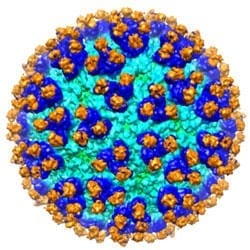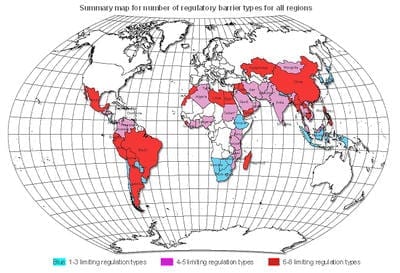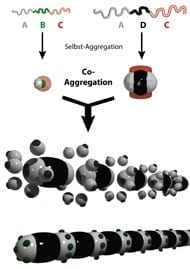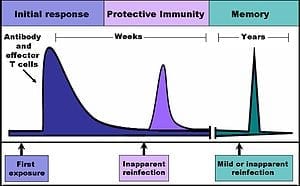
Purdue Univ. researchers have successfully eliminated the native infection preferences of a Sindbis virus engineered to target and kill cancer cells, a milestone in the manipulation of this promising viral vector.
“This virus had been known to be a good vector for delivering therapeutic cargo, however it naturally infected all kinds of cells, and these diversions would compete with what we were instructing it to target,” said Richard Kuhn, the Gerald and Edna Mann Director of Purdue’s Bindley Biosciences Center. “We have now overcome a major challenge by not only inserting a targeting molecule of our choice, but also successfully stripping the virus of its native entry preferences. This was a big step in unlocking the potential of developing this virus into a platform for both targeted drug delivery, where it would sneak drugs inside cancer cells, and oncolytic virotherapy, where the virus itself destroys cancer cells.”
The achievement also demonstrates the ability to use methods of manipulation previously only applied to proteins. The team combined the methods of rational design, in which certain portions of the virus were strategically altered based on known information about their structure and function, and directed evolution, in which random mutations were introduced to millions of copies of the virus and the results are then screened for the desired traits, he said.
“These experiments demonstrate that these two methods can be combined and used to create complex molecular machines, like this viral vector with a tailored targeting receptor,” said Kuhn, who also is head of the Department of Biological Sciences. “We’ve now reached the point where we can easily change the virus to carry a variety of cargos and to seek out specific types of cells. We know where and how to add the characteristics we want and eliminate those that we do not.”
A paper detailing the work was published in the October issue of the Journal of Virology and is currently available online. In addition to Kuhn, co-authors include Purdue postdoctoral researcher Zheng Liu, associate professor of biological sciences Wen Jiang and former postdoctoral researcher Hong-Sheng Dai. The National Institutes of Health funded this research.
Through standard rational design procedures the team inserted a human epidermal growth factor, or EGF, targeting sequence into the genome of the virus, and changed some of its amino acids to stabilize the addition, Kuhn said.
Cancer cells have large quantities of this growth factor receptor and it has been studied as a target for cancer therapies for nearly 30 years. When the ESV1 virus binds to the EGF receptor on a cancer cell it triggers a natural signal for the cell to internalize, or consume, the growth factor and the virus is carried in along with it, he said.
“This receptor is found in healthy human cells, however these cells won’t be harmed by the ESV1 virus because they don’t consume the growth factor in anywhere near the quantities cancer cells do,” he said. “A healthy cell will easily be able to manage this virus, but cancer cells will gobble it up in overwhelming and deadly amounts.”
Go deeper with Bing News on:
New cancer treatment
- Critical funding to Victoria's world-class cancer centre cut
Treasurer Tim Pallas's 10th budget revealed medical research funding would be cut from $30.5 million to $7.5 million over four years.
- Are Much Needed Advances in Early Esophageal Cancer Detection on the Horizon?
Esophageal cancer remains plagued by a lack of effective techniques to detect early malignancies. Due to this major clinical challenge, esophageal ca | Cancer ...
- I Had Cancer. My Treatment Was Eye-Opening About Addiction
I've had two different types of cancer in two years and in both instances, I was screened, diagnosed early, and ushered into care.
- PhilHealth increases breast cancer benefit to P1.4 million
Breast cancer patients may now avail of up to P1.4 million worth of benefit for treatment as the Philippine Health Insurance Corporation (PhilHealth) approved the hike for its "Z-Benefit Package." ...
- New, painless skin cancer treatment coming to Vanderburgh Co.
People who suffer from skin cancer in Vanderburgh county will now have the option to go through nonsurgical, painless treatment.
Go deeper with Google Headlines on:
New cancer treatment
[google_news title=”” keyword=”New cancer treatment” num_posts=”5″ blurb_length=”0″ show_thumb=”left”]
Go deeper with Bing News on:
Cancer treatment
- Critical funding to Victoria's world-class cancer centre cut
Treasurer Tim Pallas's 10th budget revealed medical research funding would be cut from $30.5 million to $7.5 million over four years.
- Are Much Needed Advances in Early Esophageal Cancer Detection on the Horizon?
Esophageal cancer remains plagued by a lack of effective techniques to detect early malignancies. Due to this major clinical challenge, esophageal ca | Cancer ...
- Bond with his mother Veronica, a cancer survivor, runs deep for Jaguars tackle Tyler Lacy
Jacksonville Jaguars' tackle Tyler Lacy comes from a close-knit family, with mother Veronica as the rock. A cancer survivor, she's a "hero" that inspires him.
- I Had Cancer. My Treatment Was Eye-Opening About Addiction
I've had two different types of cancer in two years and in both instances, I was screened, diagnosed early, and ushered into care.
- New, painless skin cancer treatment coming to Vanderburgh Co.
People who suffer from skin cancer in Vanderburgh county will now have the option to go through nonsurgical, painless treatment.
Go deeper with Google Headlines on:
Cancer treatment
[google_news title=”” keyword=”cancer treatment” num_posts=”5″ blurb_length=”0″ show_thumb=”left”]










